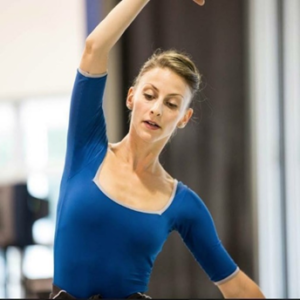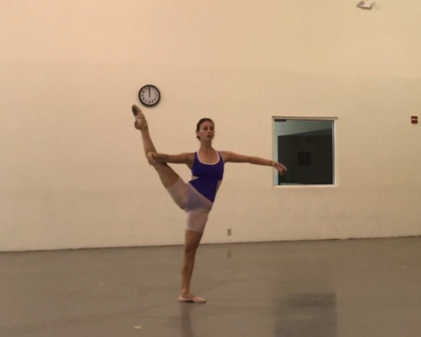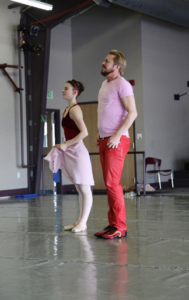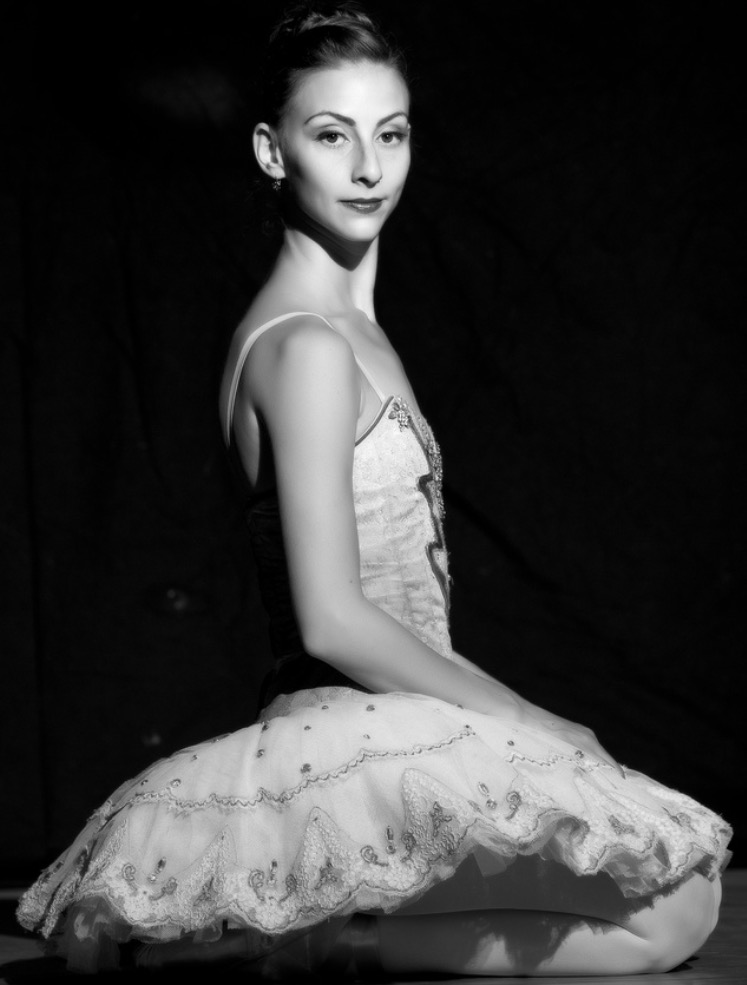
The regular physical pain of a professional ballet dancer’s life can be overwhelming. Every dancer experiences a different pain level during their careers. At a young age, the dancer is taught how to overcome and tolerate these types of pain whether it is physical or mental.
With time and patience, the disciplines required to pursue this life become normality. Early on, while in ballet school, I learned that it was inevitable to work with a commitment level of an adult. We are forced to heighten our judgement to guide us through the challenges.
As I sit and think about how to write this article, I am struggling to put it in to words. First off, I must say how truly lucky I am to do what I love every single day. I am one of those people who jumps from bed ready to tackle another day of dance. As I take you through a typical daily routine, I want you to keep this in mind.
Tolerance
As you can imagine, dancers typically have a high pain tolerance because of the demands put on their bodies. When I was first starting out as a professional ballet dancer ten years ago, my days began at 9:45 a.m. and finished after 6 p.m. Then when I joined my second company, the schedule changed to 10 a.m.– 5 p.m. with no lunch break. Now, at Miami City Ballet, I attend class each morning beginning at 10 a.m. and finish rehearsals at 6:30 p.m. with an hour lunch break.
Experiencing scheduling at a variety of companies has taught me that there is always intention behind the day. Typically, a rehearsal day is a combination of multiple ballets over the course of seven hours in preparation for our performances. Throughout the season, depending on our performance schedule, the weeks shift from Monday through Friday to Tuesday through Saturday. Our performance weeks leave us with just Mondays off.
I find the most difficult time during the year to be when we rehearse various genres of dance all at once. Although extremely rewarding, your body certainly feels the changes your muscles endure.

For example, shifting from a modern work where you might be in flat shoes rather than pointe shoes puts a different pressure on your quads and calves. You may develop blisters on different parts of your feet where the skin has not callused over.
Typically, our modern works require a grounded intention and these requirements can make the day more challenging. Each hour leading up to 6:30 p.m. may be scheduled for a different ballet. Preparing your body, the right point shoes, and making sure to review the choreography before presenting it to the room are all components of the day. I find it helpful to plan out an hour at a time. This makes it easier to approach physically and mentally and eventually a dancer develops the habits in which are needed to tolerate this level of work.
Our season can include 10-15 works of which we learned the bulk of between the months of August and October. During the month of January, we shifted from Nutcracker season into rehearsals to finalize the rest of our repertoire. We recently performed our Jerome Robbins Centennial Celebration (Program Two) featuring five of his works. During this time, we rehearsed Tuesday through Friday, performed Friday, Saturday, Sunday, and rested on Monday. During the week leading to our performances, the company rehearsed works from Program Three and Four while still keeping Program Two fresh. These works included choreography by George Balanchine, Alexei Ratmansky, Brian Brooks, and Jerome Robbins. Once we approach the end of our season, we may begin work on our repertoire for the next season before April and May pass. When I explain what I do to people outside the ballet, they always wonder how I keep all the ballets I learn straight. Honestly, it takes time to learn and absorb all the material. I typically write down my material once I have learned it and then spend time on my own in the studio or at home to watch videos or review. It is one thing to remember a work in the studio, but it is another to know it well enough to perform it on stage without the mirror.
Patience
“Patience” is probably the most important word in the world of dance to me—patience that is both physical and mental. The minute a dancer is unable to endure the wait without negativity is the minute all improvement ceases. Unfortunately, the life of a dancer is full of heartbreak and frustration. This is the part of the job that the audience does not witness.
People will ask me what I do during the day and sometimes I hesitate because it is so challenging for me to explain what goes on in a mind of a dancer during a 12-hour period. There can be so many ups and downs and moments where you feel completely alone, but as a person living in this unbelievably rewarding and sometimes confusing career, ballet dancers are some of the strongest, toughest-skin human beings I know.
Mental Stability
It goes unnoticed because of our gracefulness and ability to maintain calmness, but the day can turn negative quickly. After several years of practice and training, I have found ways to compartmentalize the positive and the negative aspects of the day. For example, the casting board is a major component of a dancer’s day and overall season. Learning to tame your emotions when you do or do not see your name on the cast list is vital to the focus of the day. If you learn to understand the casting and not internalize it will help you move forward. There is usually a reason for why or why not you have been cast in a specific role. These moments can fuel motivation to make a change or improve. Another aspect of the day that impacts a dancer is morning class. Class is a time to work on yourself and find an overall balance for the day. Most non-dancers do not realize that professionals attend ballet class every morning to warm their bodies up. We face a lot of challenges in the first hour and a half of the day. As my own critic, internal questions surface about overall appearance, placement, or why or why not I receive corrections during class.
There is tremendous pressure to reach the look you desire without psyching yourself out. I have grown to understand myself and feel confidence in myself by reaching smaller goals that I set up. This helps me continue on a steady path upwards rather than being beaten down or defeated.
The audience does not see that side of us, but a dancer goes through quite a wild mind ride when it comes to rehearsing and performing for nearly 40 weeks a year up to 40 hours a week.

Developing this maturity starts through the structure of a typical ballet class which we take every day. Classes require the dancer to stand in formation and judge themselves. Critiquing your arm, head, and leg positions in class forces us to be our own teacher too.
Oftentimes, it can be extremely difficult to stare at yourself in the mirror. I remember one year, which I will not discuss, where I went home and literally cried every night because I was not happy with how I looked or felt. Winning the competition with yourself can be the most difficult competition of all.
Consistent coaching and reviewing before approaching the stage is all worth it, but there needs to be a balance. Perfection does not exist and ballet is not simple. My ballet teacher of 21 years always says, “If ballet were easy everyone would do it.”

Jewels (October 2017) Photo by dancer.

Contributor Samantha Hope Galler, a Bedford, Mass. native, spent 13 years training with The Ballet Academy, Inc., under the direction of Frances Kotelly in the Cecchetti Method. She performed six seasons with The Northeast Youth Ballet under the direction of Denise Cecere. She continued training, on scholarship, with Boston Ballet School and received the PAO Merit Trainee Scholarship. She received the NFAA Honorable Mention Award in Ballet. Galler spent summers training at Boston Ballet, Central Pennsylvania Youth Ballet and Boston Conservatory. She danced with Cincinnati Ballet in their 2008-2009 season under the direction of Victoria Morgan.
Samantha spent five seasons with Alabama Ballet under the direction of Tracey Alvey and Roger Van Fleteren. During her tenure there, she was promoted to principal dancer. She had the honor of performing some of her dream roles including Juliet in Romeo and Juliet, Odette/Odile in Swan Lake, The Lilac Fairy in The Sleeping Beauty, The Sylph and Effie in La Sylphide, Myrtha and Moyna in Giselle, Dryad Queen and Mercedes in Don Quixote, the Rancher’s Daughter in Agnes De Mille’s Rodeo. Her Balanchine roles included Dark Angel in Serenade; The Sugarplum Fairy, Arabian and Lead Marzipan in George Balanchine’s The Nutcracker™; and the principal roles in Allegro Brillante and Tarantella. She has also performed in Jiří Kylian’s Sechs Tanze, and Van Fleteren’s Shostakovich and Romancing Rachmaninov, both world premieres.
Samantha joined Miami City Ballet as a member of the corps de ballet in 2014. Since joining Miami City Ballet, Samantha has performed in various roles including as the Sugar Plum Fairy in Balanchine’s The Nutcracker and as the Harp Soloist in Balanchine’s Raymonda Variations.




